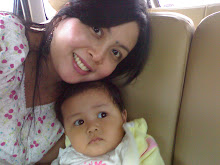The importance of getting the right footwear
| The importance of getting the right footwear for your child can’t be underestimated. Everyone ends up with 26 bones in each foot, but these barely exist in a baby. Up until about nine months old, baby’s feet are mostly still cartilage and gristle and the bones continue to form up until age 11. Then, in most girls, the bones keep growing until 18 years of age, and age 20 for boys. Inappropriate footwear can damage these delicate bones in the early years. |
Footwear for little babies and crawlers
| Podiatrist Paul West of the New market Podiatry Center says little babies and crawlers don’t need shoes. It’s best to let their feet grow and explore as unencumbered as possible. Soft booties and socks are fine to keep baby warm in winter. Take care that all-in-one outfits are not too small because they can pull on baby’s toes. This can result in damage in as little as two weeks. Loose threads can also wind themselves around toes and quickly cause damage. |
Footwear for early walkers
| Early walkers should wear non-slip socks or bare feet if possible, so there is nothing to interfere with their developing gait. But, says West, once your toddler is up to walking around outside, it is time to invest in their first pair of shoes. Says West: “Price shouldn’t be a guide to how good a shoe is – I have seen well-constructed shoes at The Warehouse.” West recommends taking your toddler to a shoe shop where sales staff has the time and proper measuring gauges to fit them for their first pair of shoes. |
Getting the fit right
| If your child is found to have particularly wide or narrow feet, you may be forced to frequent specialist children’s shoe shops. But, with a little expert advice, parents of children with average-sized feet can learn to become discerning shoe buyers for their kids. Paul West says children should always be fitted standing up because feet are at their largest size when load bearing. Be prepared to ask if you can take the inner-sole out to check the sizing if necessary, or arrive armed with a strip of cardboard cut to length (from the tip of the big toes to the back of the heel when your child is standing). • If you can’t bend a shoe from the toes to the heel, don’t buy it. Shoes should flex at the ball of the foot as this is where the foot naturally bends, not in the middle. Soles should be reasonably firm up to this point. • If you can bend down the back of the heel (heel counter) with one finger, it’s not firm enough. Also check that the back of the shoe won’t cut in under a child’s ankle. When walking, the wearer’s heel shouldn’t slip out of the shoe. • Do allow for growing room, but don’t buy shoes for your toddler to grow into. The rule of thumb is a thumb’s width of space in front of the big toe. Children of any age will trip over in shoes that are too big. • Make sure the shoe doesn’t pinch toes, depth in the shoe toe, as well as length, is important here. • Shoes should fit snugly around the midmost, so some sort of adjustment is essential – laces, Velcro, or buckles. • Look for a straight last (instep) rather than one that is too curved, to encourage straight walking. • Shoes should be easy to get on and off. • Be aware that your child may need three different sizes of shoes in their first year of walking due to their growth rate. |

No comments:
Post a Comment